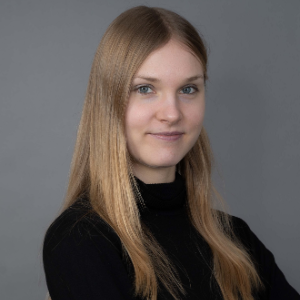Title : Novel dosimeters for process control of next-generation production of vaccines and immune-therapeutics
Abstract:
The use of low-energy electron irradiation (LEEI) is a novel and highly efficient method for manufacturing vaccines and other pharmaceutical products. This technology provides advantages against conventional methods for virus inactivation, as the process is faster, does not require toxic chemicals and minor radiation shielding is needed in comparison to the use of gamma irradiation. 1 However, the performance of processes using LEEI such as virus inactivation and cell modifications for immune therapeutics is correlated to a certain dose, which must be monitored by a suitable liquid dosimetry system. While vaccine production by virus inactivation needs a high dose, i.e. the Tick-Borne Encephalitis virus or Zika virus around 20 kGy1,², blood irradiation for immune therapy should not be higher 300 Gy3.
This study established different chemical dosimeters with calibration functions for different dose ranges. Their absorbance spectra were measured and the storage stability prior to irradiation was determined.
The samples were irradiated in small volumes in an LEEI plant with a built-in blending system using 200 kV acceleration voltage. Dose rates from 20 kGy/h to 125 kGy/h were applied. Each liquid dosimeter was studied at different pH levels and concentrations. Not harmful dyes such as 1,9-dimethyl-methylen blue (MTB), resazurin, and tartrazine Harmless dyes such as 1,9-dimethyl-methylene blue (MTB), resazurin and tartrazine were suitable as chemical dosimeters between 100 Gy and 4 kGy. These solutions bleach gradually and dose-dependently when exposed to the electron beam. As a result, aqueous solutions of 0.2 mM MTB and 0.2 mM resazurin at pH 10 were suited dosimeters for the low dose range. The MTB showed a dose-dependent decolorization from 150 Gy up to 1.5 kGy and excellent stability within 35 days. The absorbance of resazurin was fitted with a second-order polynomial function at 63 Gy to 1040 Gy and the initial absorbance spectrum showed excellent stability within 7 days. A 0.5 mM tartrazine solution at pH 4 was appropriate for dose measurement in the mid-dose range. Its absorbance decreased gradually over a dose range of 24 Gy to 4.18 kGy and was stable for two days with a percentage change of 7.7 %. Another chemical dosimeter based on the colorization of a solution of 2,3,5-triphenyl-tetrazolium chloride (TTC), which has already been established for virus inactivation², made it possible to measure high dose rates from 6.5 to 40 kGy.
In conclusion, this study provided novel solutions for process control and monitoring of LEEI for the production of vaccines and immune therapeutics, which is a next-generation technology providing many benefits against traditional pharmaceutical methods.
Audience Take away:
- Overview of low-energy electron irradiation (LEEI) for virus inactivation and generation of immune therapeutics
- Advantages of LEEI in comparison to traditional methods of vaccine production
- Solutions for process monitoring and control by liquid dosimetry
- Introducing different potential and novel liquid dosimeters for different dose ranges developed for LEEI



